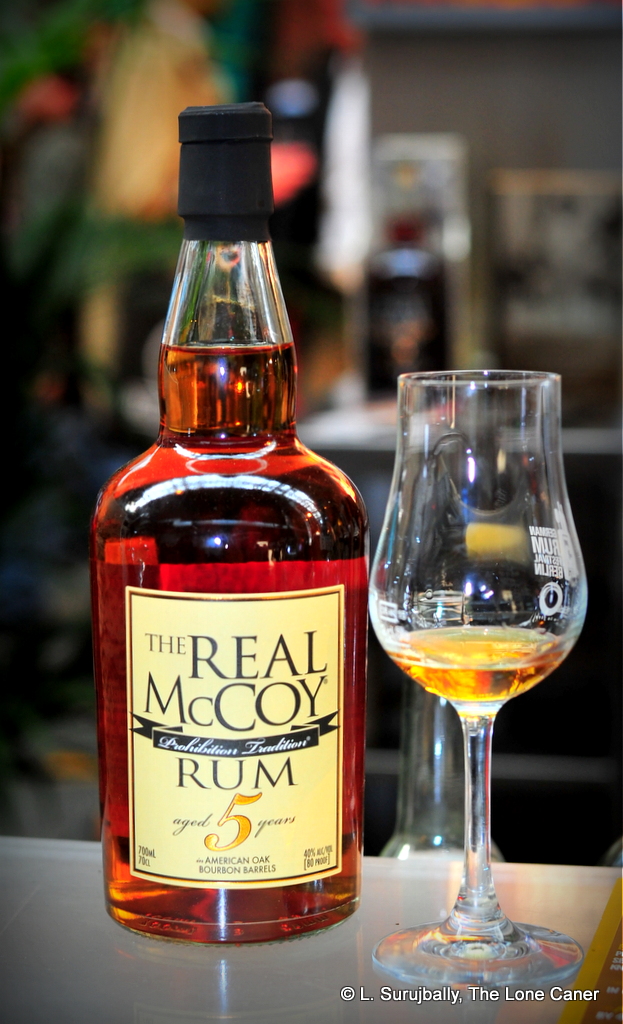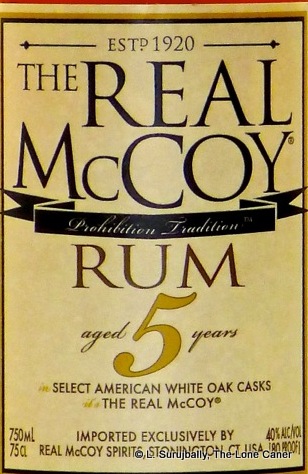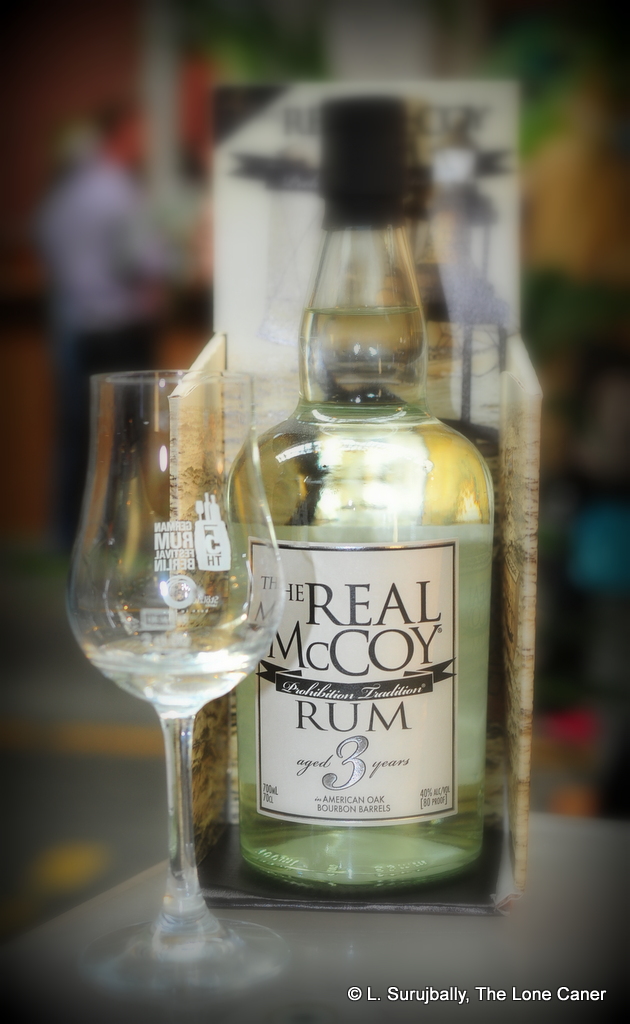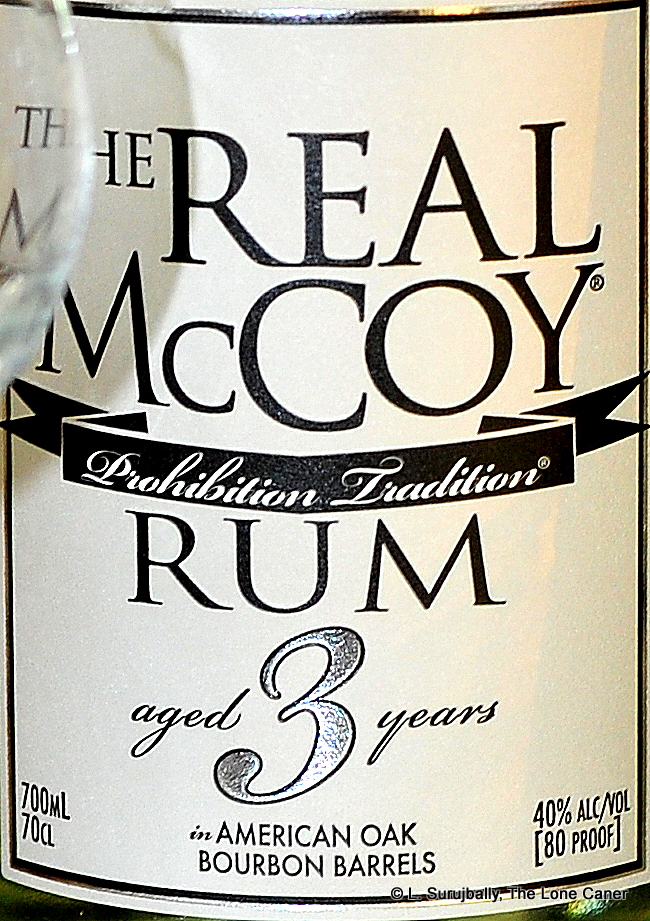
No one these days needs any introduction to the Real McCoy series of rums, which Bailey Pryor released in 2013 in conjunction with Foursquare Distillery (another name requiring no elaboration). He was inspired, so the founder’s myth goes, to try his hand at rum after making a documentary on the Prohibition rum runner of yore for whom the phrase “The Real McCoy” is named, since said gent gave pure value for money and didn’t try to gyp his customers. You could almost say that this is the first instance of a Barbados rum being given a name that supposedly touts its attributes, which is now ascending to the heights of polysyllabically pretentious ridiculousness…but never mind.
Although Mr. Pryor initially released a 3YO and a 5YO and a 12 YO McCoy rum, somehow the gap-filler of an 8 or 10 year old was not addressed until relatively recently when the 10 year old started to go on sale in the USA (around 2017), issued as a limited edition of 3000 bottles. It was a blend of pot and column still Foursquare distillates aged for between 10-12 years in charred ex-bourbon and virgin oak (the proportions of pot:column and 10:12 years remain unknown, though it’s noted that a rather larger pot still component is present) and bottled at 46%.
You’d think that with that kind of mix-and-match combination of several elements – char, age, oak casks, stills – you’re in for a flavour rollercoaster, but you’re not, not really. The nose was simply….less (and that’s not because of the 46%, as I was trying it with a set of equal-or-lesser-proofed rums). Basically, there was too much bitter woody smells in the mix, which elbowed out – or at least dominated – the softer aromas for which Barbados is better known. So while I could sense some vanilla, fleshy fruits (ripe mangoes, cherries, papaya), bananas, honey and some light cumin, the real problem was how little of that managed to crawl out from the rock of the woody foreground.
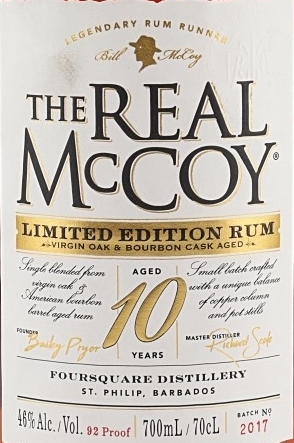 On the palate, the slightly higher strength worked, up to a point. It’s a lot better than 40%, and allowed a certain heft and firmness to brush across the tongue. This then enhanced a melded mishmash of fruits – watermelon, bananas, papaya – plus cocoa butter, coconut shavings in a Bounty chocolate bar, honey and a pinch of salt and vanilla, all of which got shouldered aside by the tannic woodiness. I suspect the virgin oak is responsible for that surfeit, and it made the rum sharper and crisper than those McCoy and Foursquare rums we’re used to, not entirely to the rum’s advantage. The finish summed of most of this – it was dry, rather rough, sharp, and pretty much gave caramel, vanilla, light fruits, and some last tannins which were by now starting to fade. (Subsequent sips and a re-checks over the next few days don’t appreciably change these notes).
On the palate, the slightly higher strength worked, up to a point. It’s a lot better than 40%, and allowed a certain heft and firmness to brush across the tongue. This then enhanced a melded mishmash of fruits – watermelon, bananas, papaya – plus cocoa butter, coconut shavings in a Bounty chocolate bar, honey and a pinch of salt and vanilla, all of which got shouldered aside by the tannic woodiness. I suspect the virgin oak is responsible for that surfeit, and it made the rum sharper and crisper than those McCoy and Foursquare rums we’re used to, not entirely to the rum’s advantage. The finish summed of most of this – it was dry, rather rough, sharp, and pretty much gave caramel, vanilla, light fruits, and some last tannins which were by now starting to fade. (Subsequent sips and a re-checks over the next few days don’t appreciably change these notes).
Well, frankly, this is not a rum that turns my crank. While respecting the proficiency and heritage of their long history of rum production, I’ve not cared overmuch for Barbados rums as a whole – too many are just “okay,” lacking unique individuality in too many instances, and it takes a rum like the Plenipotenziario or the 2006 10 Year Old or the Criterion or the Mount Gay Cask Strength to excite my interest…which isn’t much given how many rums are made on the island.
There’s also the odd fixation with blends that remains puzzling to me since it would seem that in today’s climate of rum appreciation, more aged 100% pot still rums from Fousquare or Mount Gay or WIRD would lend lustre to the island and enhance its variety and terroire to a greater extent than a series of recurring and juggled-tweaked blends would — because right now it’s just the skill and rep of the master blenders that keeps bored yawns of “I’ve had this before” at bay (this is a cruel but true observation about human nature). Fortunately, there are indicators that this is changing – Mount Gay has pot still rum on its current lineup, Foursquare and WIRD both have some on the to-do list, and the Habitation Velier Foursquare pot still rum showed off the potential, so this sub-category is not being ignored completely.
But for now, this rum doesn’t really work for me. It’s a lesser son of greater sires, a minor Foursquare rum in all ways that matter – nose, taste, finish, the works. It’s one of the few instances where, for all its greater-than-usual pot still makeup and ten years of ageing, I have to ask in some puzzlement What were they thinking? And if I were to give it one of those facile latin names that seem to be gaining traction these days, I’d call it Tantum Odiosis, because that’s really all it is. Now that’s a veritas for you.
(#729)(79/100)
